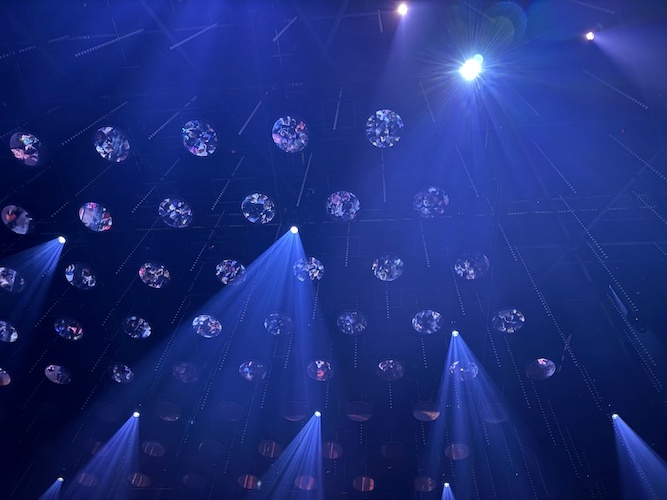Inside ABBA Voyage: How Disney's ILM Helped Resurrect Pop Icons in Stunning Digital Form
In a purpose-built arena near Pudding Mill Lane, audiences witness what seems impossible: a full ABBA concert, headlined not by tribute performers but by ABBA themselves—digitally reborn and performing night after night. At the center of this futuristic spectacle is Industrial Light & Magic (ILM), the famed visual effects house owned by Disney. Known for its work on Star Wars, The Mandalorian, and Avengers, ILM has now ventured into live music to make the ABBAtars possible.
This article draws on behind-the-scenes insights from two official programs sold at the venue, as well as notes from our own experience attending the show in London.
The idea began as a vague suggestion: what if ABBA could tour without ever leaving home? What if you could see them not as holograms or archival footage, but as vibrant, moving performers in the present tense? Director Baillie Walsh was clear: this wasn't a nostalgia act. This was about capturing performances by ABBA today, but presented visually as fans remember them in their prime.
Early versions of the project resembled a film, but with an audience of 3,000 attending each night, Walsh knew it had to be more than cinema. The result: a hybrid concert that features life-sized digital avatars of the band members performing on a massive LED screen, with a live 10-piece band on a riser below them. The ABBAtars, as they're affectionately called, are rendered to appear as if they're truly onstage, in sync with the band and lights.
ILM’s role in this cannot be overstated. More than 1,000 artists worked on the ABBAtars. Over 100 staff traveled to Stockholm for the six-week motion capture shoot, where Agnetha, Benny, Björn, and Frida donned full-body suits to perform their classic hits and new songs alike.
Ben Morris, ILM Creative Director, described the task as one of the hardest of his career: crafting lifelike digital humans who not only looked accurate but sustained believability over a two-hour runtime. These weren’t brief VFX shots for a film; the avatars had to hold up under constant scrutiny from all angles, under stage lighting, in close-ups, and from the back row.
Every twitch, smile, strut, and glance was captured, down to Agnetha's lip bites and Frida's unpredictable stage presence. The band also had to shave their beards for more accurate facial capture, a symbolic gesture of commitment to a process no one was entirely sure would work.
As incredible as the technology is, it isn’t seamless. The ABBAtars are part of a massive LED wall that dominates the stage. Most of the time, with the lighting and choreography just right, the illusion is mesmerizing. The band on the riser below occasionally disappears from view, heightening the visual illusion that ABBA is there.
But there are moments where the magic falters. Animated interludes and stylized visual sequences break the continuity, pulling audiences out of the concert mindset. A mid-show segment humorously nods to ABBA’s famous quick-changes, leaving the arena in darkness as voiceover banter fills the space.
The illusion breaks most noticeably when the arena’s sliding side panels show close-ups. These tighter shots often land in uncanny valley territory—a visual dissonance reminiscent of Robert Zemeckis’ Polar Express or A Christmas Carol. Benny’s likeness in particular is less convincing than the others.
A standout aspect of the production is how the stage visuals blend with the arena itself. The ABBA Arena is designed not just as a venue but as part of the visual storytelling. Elements from the ceiling—including strings of light, rotating mirrors, and precise spotlights—lower or activate in sync with moments on the screen, expanding the perceived space and enhancing depth. These lighting effects often feel like they're emerging from or reacting to what's seen on stage, creating a seamless illusion between the real and the digital.
Despite its occasional rough edges, ABBA Voyage remains a testament to how emotional storytelling can coexist with technical innovation. ILM’s team, led by Ben Morris and VFX supervisor Nicky Penny, didn’t just build digital avatars, they built belief.
This isn’t just a visual stunt. Every lighting cue, every camera angle, and every costume—meticulously scanned and recreated—exists to serve the audience’s emotional experience. ABBA’s goal wasn’t to simply relive the past but to offer something new: an expression of gratitude to fans that bridges time and memory.
As a division of Lucasfilm, ILM continues its tradition of groundbreaking entertainment under the Disney umbrella. From Star Wars: Galaxy’s Edge to Rise of the Resistance, ILM’s capacity to blend physical and digital storytelling has become a core part of the Disney experience. ABBA Voyage may be set in London, but it feels like a spiritual sibling to the immersive worlds Disney fans have come to expect.
And for ILM, ABBA Voyage may well represent its most human achievement to date. Not because of how real the ABBAtars look, but because of how real they make people feel. As Benny himself put it, "If you build the right machine, and you build it well, then it exceeds the sum of its parts. The soul of the songs comes alive." And for 90 minutes each night, it absolutely does.
Now celebrating its third anniversary, ABBA Voyage is going strong. Click here for more information about the show and how to get tickets.




